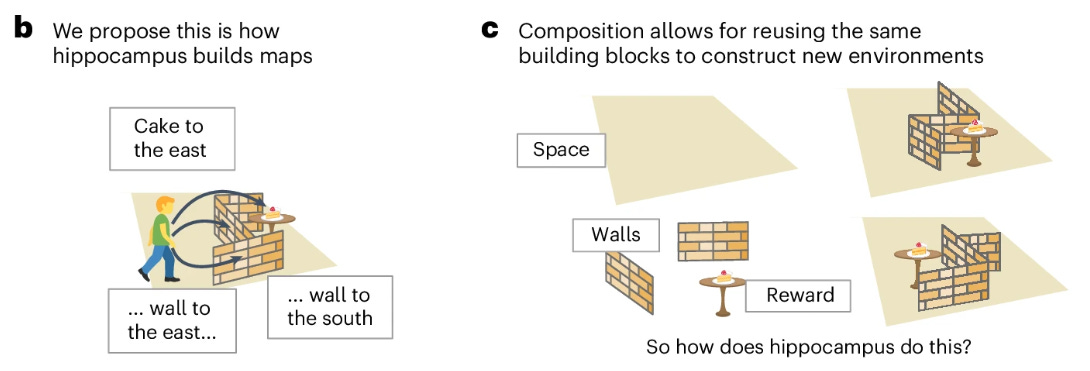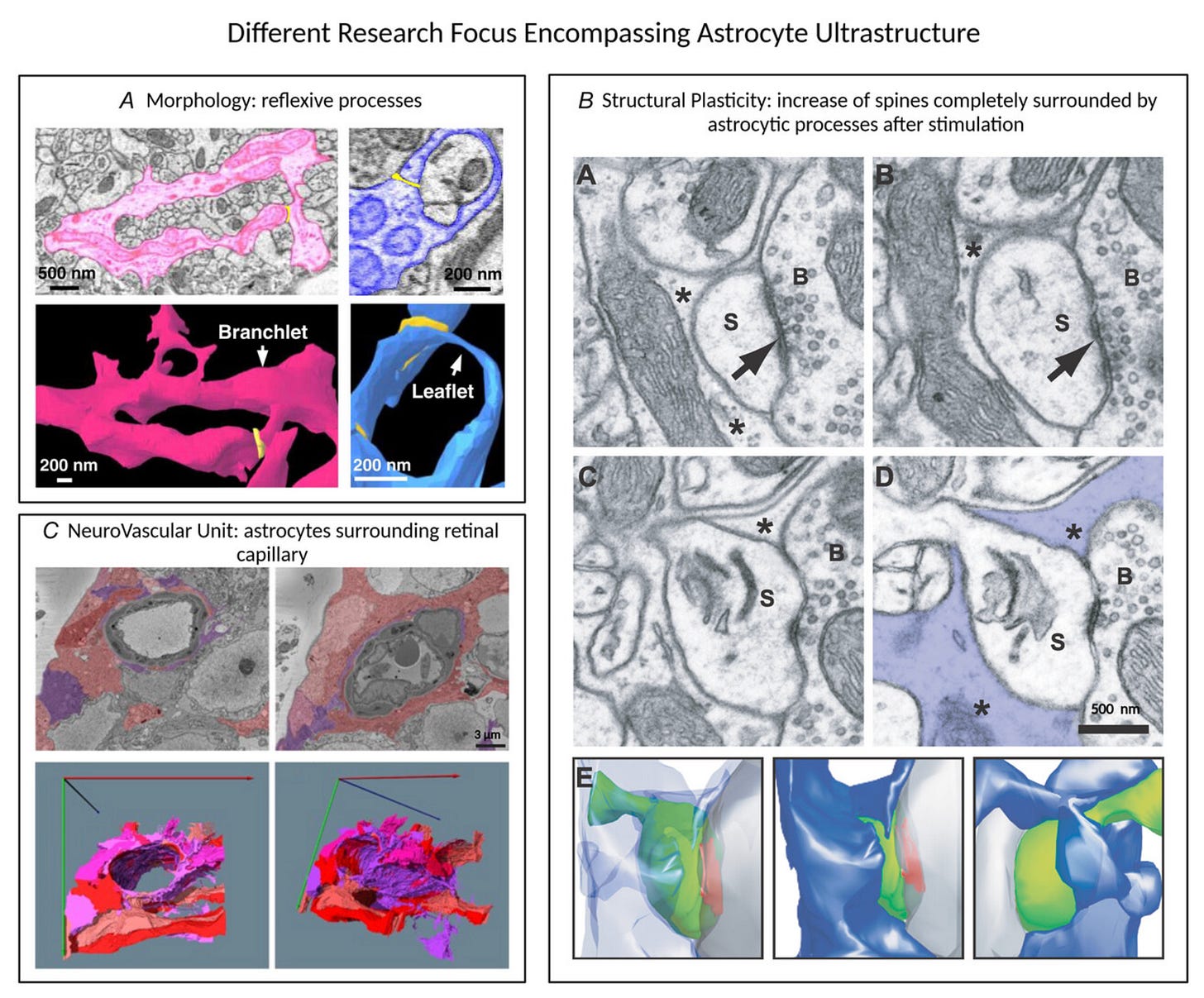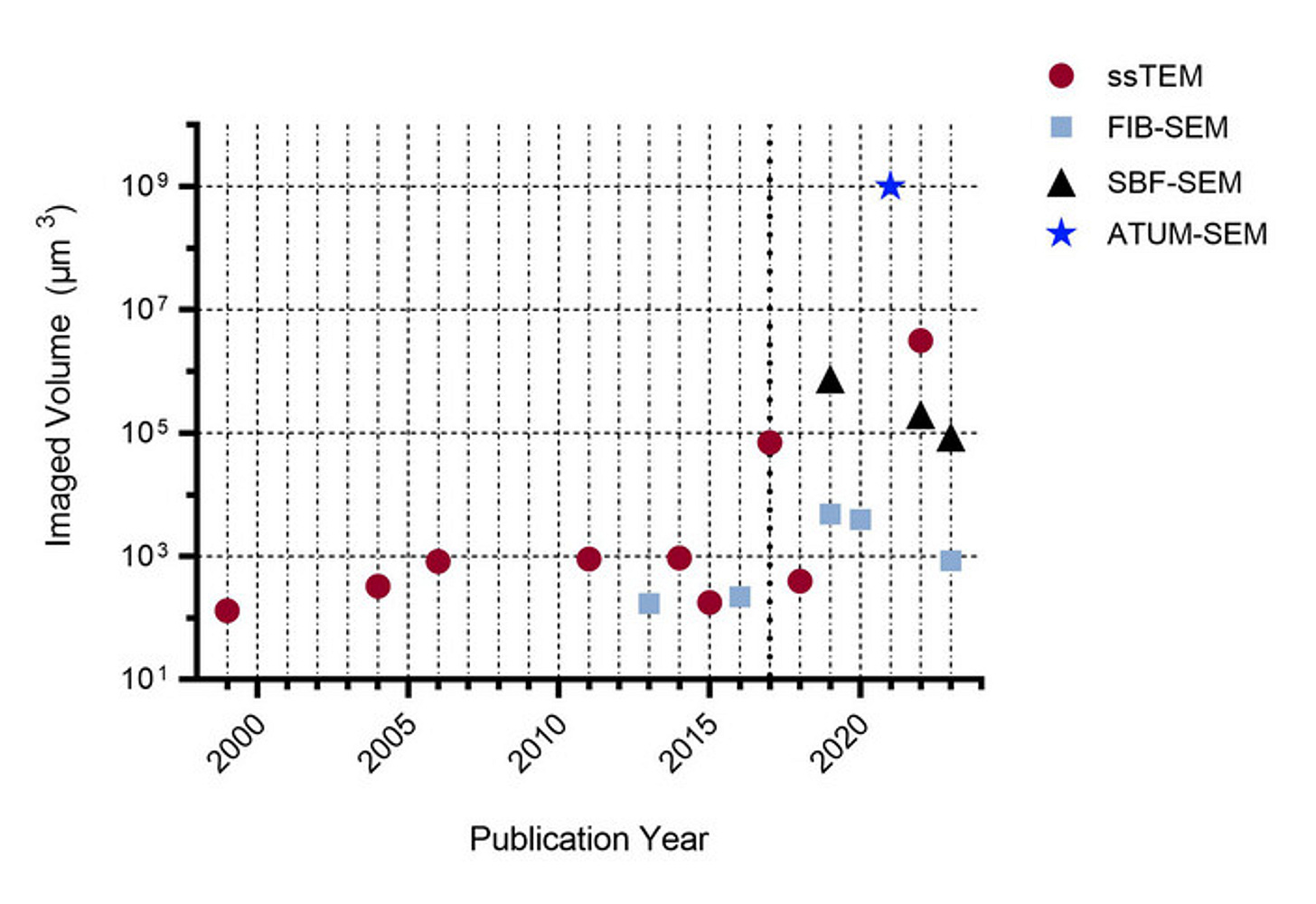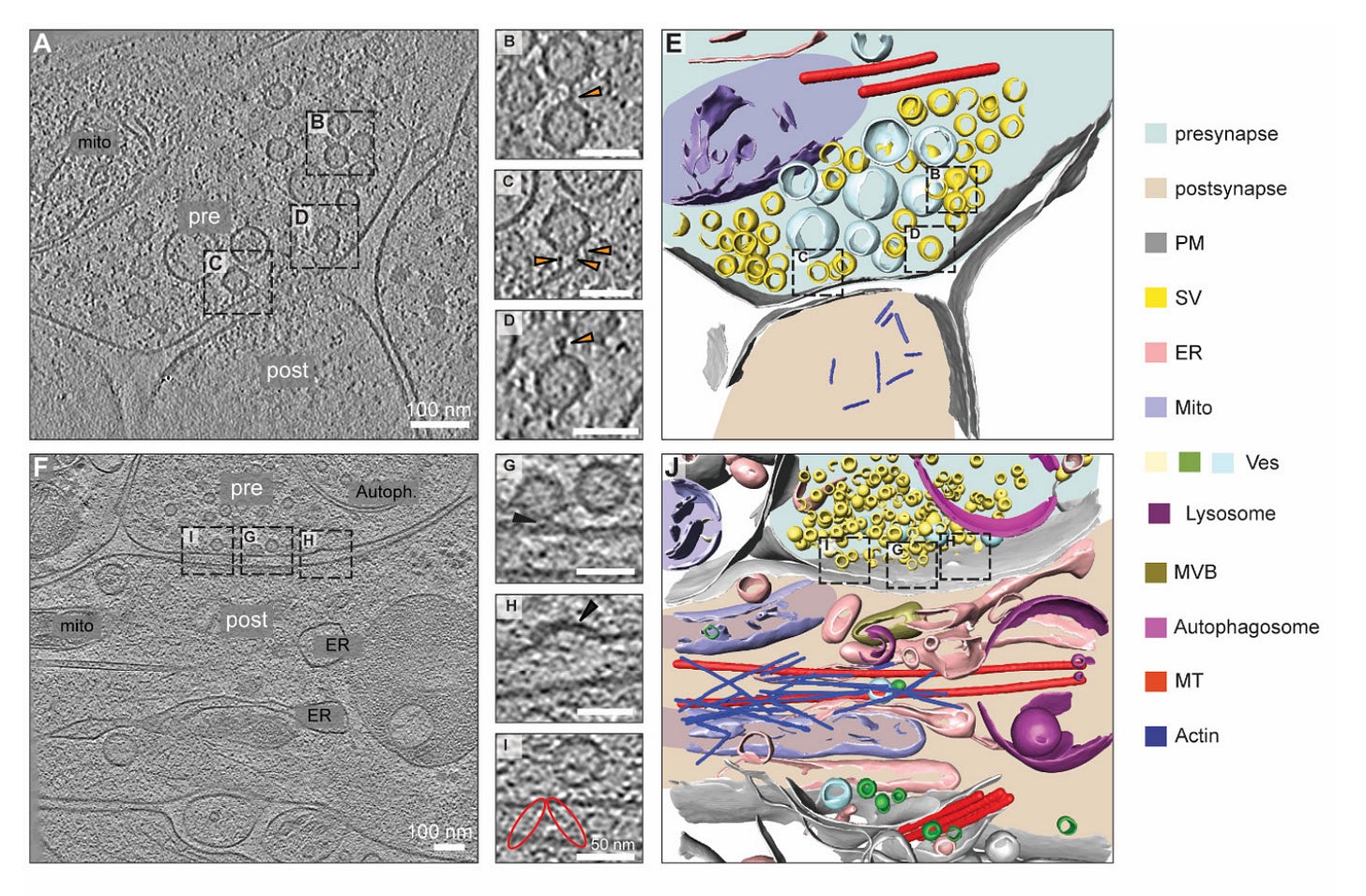1: A new study proposes that the hippocampus creates mental maps by composing “building blocks” of spatial information. The idea is that rather than learning each new environment from scratch, our brains reuse components we’ve already encountered in previous spaces to quickly make sense of new ones.
“Place cells” in the hippocampus have been well-known for many years. These are neurons that fire when an animal is in a specific location.
The authors highlight several similar types of cells in the entorhinal cortex (which feeds information to the hippocampus): (a) grid cells that code for general spatial position, (b) object-vector cells (OVCs) that represent the direction and distance to objects, (c) border-vector cells that encode the relation to walls, and (d) reward-vector cells that point toward rewards.
The firing of these cells forms the “building blocks” that the hippocampus binds together to form a mental map of an environment and imply actions.
They have an example here of how grid cells (left, with hexagonal firing patterns) and object-vector cells (right, with firing fields related to object position) are combined through an outer product operation to form a new hippocampal representation that encodes both spatial location and object relationships.
Next, they show a simple model of how memory retrieval works through a cortex-hippocampus-cortex loop. It shows how the brain can start with a partial spatial representation (left, “At this location...”), which activates the hippocampal memory system. The hippocampus then performs pattern completion through its recurrent connections, retrieving the complete bound memory. This allows the brain to recover missing information (right, “reward to the east”), which can then be used to determine the appropriate action to take.
The authors argue that this model helps to explain the purpose of neural replay, wherein neurons reactivate patterns of activity from previous experiences during rest or sleep. When analyzing recordings from rat hippocampal neurons in a task, they found that after replay events (detected as “ripples” in brain activity), neurons showed new firing fields at precisely the locations where they had fired during replay. They show three example cells that reveal changes in the heatmap showing neuronal firing activity across space that are aligned with their replay spike locations (red X):
This model bridges traditional views of the hippocampus as a memory center with newer models that see it as representing state spaces for reinforcement learning. By showing how the hippocampus combines reusable elements into new representations, the study explains how we can understand new environments so efficiently. Although they don’t have clear evidence for this, they also suggest that similar compositional mechanisms might underlie other forms of flexible thinking, like imagination and planning.
2: A new review on how volume electron microscopy has recently changed our understanding of astrocyte ultrastructure, showing that these star-shaped glial cells possess extremely fine processes that can only be visualized at nanometer resolution. They can surround neurons, synapses, blood vessels, and oligodendrocytes.
Unlike neurons with their relatively well-defined structures, astrocytes have a dynamic, shape-shifting quality. They contort into spaces in wonderful ways with membrane processes that rapidly extend or retract in response to brain activity or fluid shifts, giving them a “spongiform” appearance.
They also have a nice figure on the data sets they found for volume EM in the brain, showing how new methods have emerged and the imaged volume has increased over the years:
Most of the data sets have been from rodents. I wonder if over time there will be more studies on human samples. One of my guesses is that more studies would be done on human samples if we were better able to preserve tissue and better understood the ischemic artifacts.
3: A new method for imaging synapses using correlative fluorescent labeling and cryo-electron tomography. It allows imaging of molecular components at an extremely detailed level:
4: A study introduces a different new technique called “seamless in situ trimming and milling” that allows 3D visualization of synapses using cryo-electron tomography. Here they use it on a sample of human brain tissue with a postmortem interval of 8.3 hours, showing preserved presynaptic structures, including axonal boutons containing synaptic vesicles and mitochondria:
5: Study finds that birdsong organization in finches is determined primarily by genetics, predominantly maintaining species-specific temporal patterns regardless of how they are tutored.
6: New method to visualize DNA loops in chromosomes during mitosis at the nanometer scale:
7: A new longitudinal study reveals that lower abdominal fat and healthier diet (based on the AHEI 2010) in midlife (age 48) correlate with better brain connectivity, white matter integrity, and cognitive function at age 70, suggesting that maintaining lifestyle interventions over long periods could help to stave off cognitive decline.
8: Age-adjusted dementia levels in the US are still falling. Specifically, three large population studies found that age-adjusted dementia prevalence in the US has dropped by approximately two-thirds over the last 40 years, with each successive birth cohort showing a lower dementia risk than its predecessor. My guess is that this is largely due to better treatment of hypertension and less alcohol use.
One might naively think that this would be widely known, but sadly a variety of forces cause us to not hear about good news. And I mean that seriously — I think people not celebrating good news like this is a huge problem. See the book Factfulness for more.
9: Archaeology tells us that leopard cats occupied human settlements in China for thousands of years before domestic cats arrived. Leopard cats likely preyed on rodents in human settlements, filling the ecological niche that domestic cats would later occupy.
Cats were first domesticated in the Near East/Egypt from African wildcats. A new ancient DNA study shows that domestic cats only reached China during the Tang Dynasty (around 700-900 CE), likely via the Silk Road from Central Asia. Genetic data from the earliest domestic cat found in China suggests that it had white or partially white fur, consistent with the high frequency of white cats depicted in ancient Chinese artwork.
10: A recent study found that blood biomarkers suggestive of axon damage (p-tau181, p-tau181/Aβ42 ratio, and NfL) predict behavioral changes in dementia-free Asian older adults. If corroborated, it’s interesting to think if this would count as a blood test to help with diagnosis in psychiatry.
11: A new study of 1,277,267 participants finds that metabolically healthy obesity (i.e. obesity without high blood pressure, elevated blood sugar, or abnormal cholesterol levels) is associated with an 8% increased risk of depression compared to metabolically healthy non-obese individuals, with the association being stronger among women. Metabolically unhealthy states showed higher relative risks of depression still: 15% for non-obese and 30% for obese individuals.
12: Based on a recent survey, most mental health professionals are conducting therapy primarily via telehealth, despite most preferring in-person sessions. In my experience, in-person therapy is generally more fun/rewarding for the clinician. But obviously it’s often a huge hassle for patients.
13: Study finds that outpatient psychotherapy use among US adults increased from 6.5% in 2018 to 8.5% in 2021, alongside the expansion of teletherapy. There was slower growth among older adults, males, people with lower incomes, those without college education, unemployed individuals, and rural residents.
14: A higher infant “distress to limitation” — i.e. the temperamental disposition to become distressed when restricted from activities — predicts poorer CBT treatment outcomes for mothers with postpartum depression.
15: Update from Eric Minikel on their prion disease research. They found that using CRISPR base editing to introduce the R37X stop codon in the PRNP gene effectively slowed prion disease progression in humanized mice, confirming their approach to PrP lowering as a therapeutic strategy.
While the initial idea for a CRISPR-based gene editing approach to target prion disease came together in just hours (on July 12th, 2016), turning this concept into reality took nine years of work. The researchers tested 56 different versions of the base editor before finding success, and conducted a 600-day survival study in humanized mice. This shows the “messy, error-prone, uncertain, expensive” nature of translating ideas into practical treatments.
16: We have now learned that Daniel Kahneman chose to die a self-determined death last year in Switzerland at age 90. As he explained in a final email: “I am still active, enjoying many things in life (except the daily news) and will die a happy man. But my kidneys are on their last legs, the frequency of mental lapses is increasing, and I am ninety years old. It is time to go.” And: “Not surprisingly, some of those who love me would have preferred for me to wait until it is obvious that my life is not worth extending. But I made my decision precisely because I wanted to avoid that state, so it had to appear premature.”
17: Article by Charl Linssen and Randal Koene on how to measure the fidelity of brain emulations and possible trade-offs in fidelity among emulation methods.
18: Natasha Vita-More on the current state of cryonics.
19: Richard Gibson reviews the book “The Law of Cryonics”. Start to the review: “Over the past few years, I have been interested in all things cryopreservation, from how it challenges our binary understanding of life and death to its potential socio-political ramifications within affluent nations and beyond.” However, he ultimately finds the book wanting, and criticizes it in a wry British style. One tidbit: I didn’t realize that Hippocrates recommended the use cold and snow as a treatment for bleeding.
20: Article by Ariel Zeleznikow-Johnston explaining the memory decoding challenge. Shameless brag alert: I am honored to have been one of the judges for this prize.
21: Article by Ariel and Eli Adashi in the American Journal of Medicine on the importance of medical treatments for aging and death, including brain preservation. Professor Adashi is the former Dean of Medicine at Brown. Key quote: “Despite medicine’s progress since the 1800s, we believe that the aforementioned neglect and paternalism are repeating themselves again today in attitudes towards aging and death. Take the 2022 Report of the Lancet Commission on the Value of Death, which declared that ‘it is healthy to die’ and ‘without death every birth would be a tragedy’ - statements that echo 19th century claims about the necessity of pain in surgery.”
















The decline in age-adjusted dementia prevalence is superficially at odds with the CDC's reporting of a secular increase in age-adjusted AD death rates.
How might these be reconciled?
1. Dramatic reduction in the incidence of non-AD dementia offsetting an increase in AD.
2. Changes in diagnosis of AD and/or coding of deaths.
3. A statistical artifact where age-adjustment doesn't completely offset the effect of fewer deaths from other causes.
I don't know where to find the data to test these hypotheses, though. Do you know what causes this apparent discrepancy?